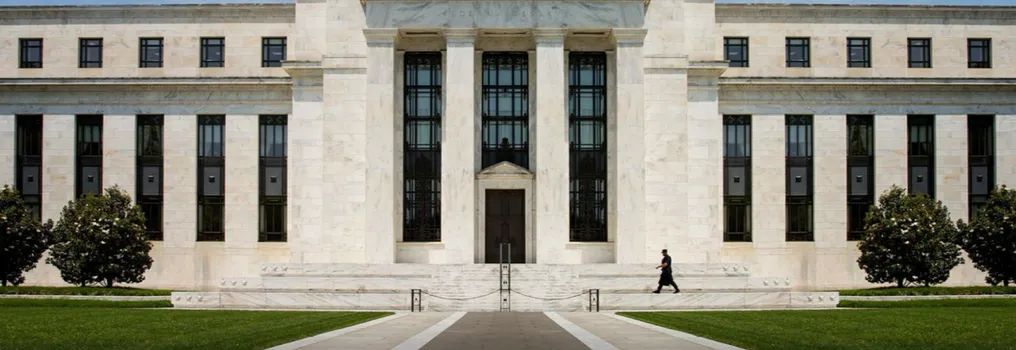Is a Fed Rate Cut Coming in September?
As the Federal Reserve approaches its next policy meeting in mid-September, investors are asking one key question: will the Fed finally pivot and start cutting interest rates?
The short answer? It’s looking increasingly likely—but not without caveats. The decision will hinge on whether recent signs of economic softness outweigh persistent inflationary pressures. The implications for both equity and bond markets are significant—and far from uniform.
Let’s break down the current economic landscape, how a potential rate cut might affect various asset classes, and what the market is pricing in for the months ahead.
The Economic Backdrop: A Crosscurrent of Signals
The Fed’s policy stance remains cautious but under mounting pressure to pivot.
- Inflation has cooled considerably from its 2022 peak. The core Personal Consumption Expenditures (PCE) index—the Fed’s preferred inflation gauge—stood at 2.8% year-over-year in July. That’s down from a high of 5.4%, but still above the central bank’s 2% target.
- Labor market data has started to soften. The U.S. added just 73,000 jobs in July, far below expectations, with downward revisions to May and June trimming an additional 250,000 jobs. Wage growth has slowed to 3.9%, indicating waning labor market momentum.
- Growth is cooling, with recent figures suggesting slower hiring, tighter credit conditions, and declining business investment sentiment.
At the same time, tariffs and political noise are complicating the Fed’s outlook. Tariffs introduced earlier this year are starting to show up in producer prices, with the PPI rising 0.9% in July—the biggest monthly increase in over three years. Fed Chair Jerome Powell has warned these pressures could make inflation more volatile.
The next Federal Open Market Committee (FOMC) meeting on September 16–17 is now widely viewed as a “live” meeting, meaning a rate change is genuinely on the table. Futures markets currently assign a 81.2%+ probability of a 25-basis-point cut.
What a Rate Cut Could Mean for the Equity Market
Winners: Tech, Real Estate, and Consumer Discretionary Lower rates typically boost equity valuations, especially in rate-sensitive sectors. Here’s where the biggest impact is likely to be felt:
- Technology: With long-duration cash flows, tech stocks often benefit the most from lower discount rates. Expect continued tailwinds for large-cap growth names and software stocks.
- Real Estate Investment Trusts (REITs): Lower borrowing costs and improved financing conditions could support REITs, particularly those focused on commercial and residential property.
- Consumer Discretionary: If rates fall and borrowing becomes cheaper, consumer confidence could rise—lifting retail, travel, and automotive sectors.
Potential Losers: Financials
- Banks and Financial Services: Lower rates compress net interest margins—the difference between what banks earn on loans and what they pay on deposits. While trading desks may benefit from volatility, the core lending business would take a hit.
Overall, a rate cut could reinvigorate risk appetite and support equities, but investors should be wary of overreliance on the Fed as a market backstop.
Bond Market Reaction: Yields Could Slide, Sentiment Could Strengthen
The bond market is already signaling that a pivot is coming.
- Treasury yields have been gradually declining from their peaks, with the 10-year yield falling closer to the 4.1–4.2% range, down from over 5% just months ago.
- A 25-basis-point cut in September would likely push short-term yields lower, steepening the yield curve—especially if the market believes further cuts are ahead.
- Credit spreads may narrow slightly in anticipation of easier monetary policy, especially in investment-grade corporate bonds. High-yield debt could also rally on improved economic sentiment—but remains vulnerable if recession fears return.
Investor sentiment in the fixed income space has already shifted. Demand for bond ETFs and longer-duration treasuries has climbed, signaling a belief that peak rates are behind us.
How Many Cuts Are on the Table?
As of mid-August, markets are pricing in two to three cuts by early 2026, with the first widely expected in September. Here's the rationale:
- Slower job growth and revised payroll data point to a weakening labor market.
- Stubborn inflation, though easing, is still above target. But the Fed may view this as manageable, particularly if tariffs are the primary driver.
- Political pressure is rising, with the Trump administration calling openly for aggressive cuts, and Treasury Secretary Scott Bessent even suggesting a half-point cut in September.
While Powell has maintained the Fed’s commitment to data-driven decision-making, he also knows the window for achieving a soft landing may be closing. A modest cut now could buy the Fed flexibility—without appearing reactive or politically motivated.
Final Thoughts
A September rate cut is increasingly probable, but not guaranteed. If it happens, it’s likely to be measured—25 basis points, with a strong emphasis on “data dependence.” That move would support equities, ease pressure in the bond market, and potentially stabilize credit markets. But the Fed will tread carefully. Powell’s Jackson Hole speech will be critical in framing the Fed’s reasoning. Markets are listening not just for what the Fed will do next—but why. Investors should remain diversified, stay attuned to inflation prints, and be ready for market volatility as expectations shift.
